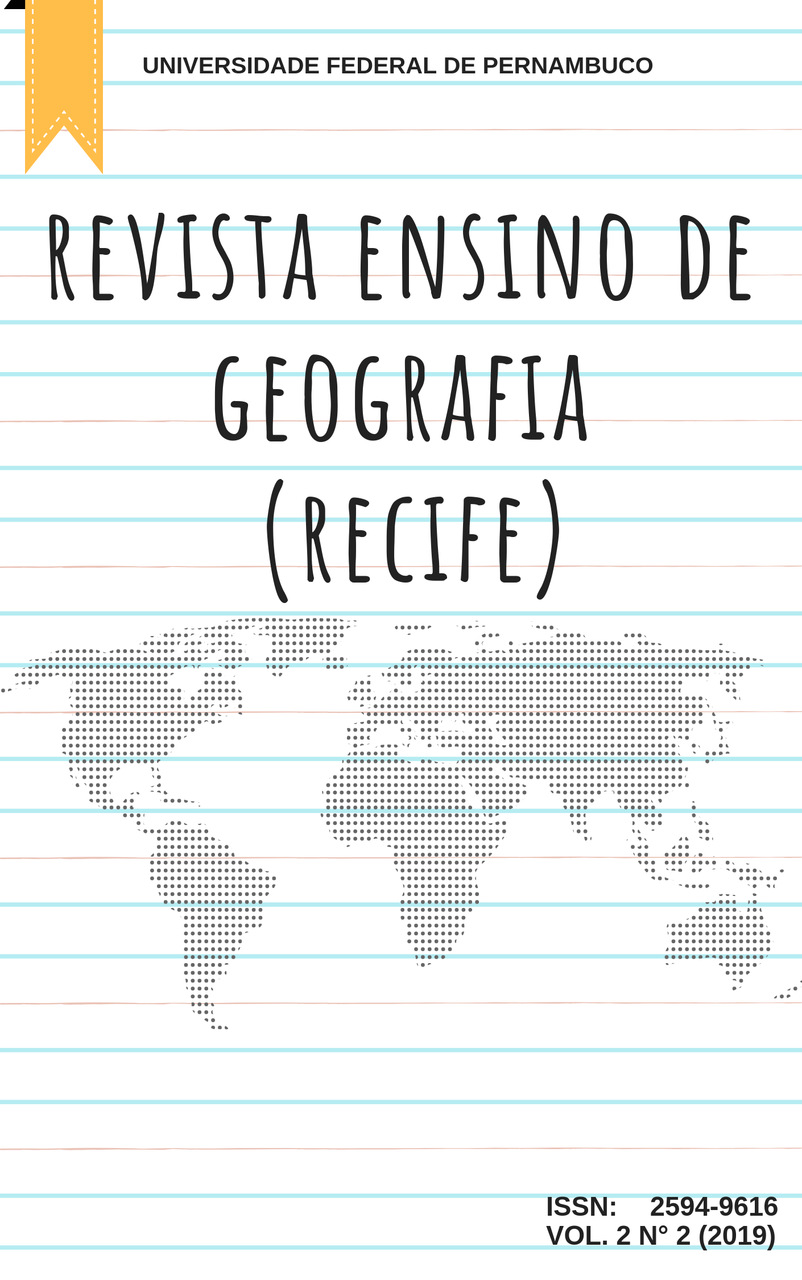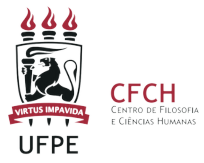Landscape in the teaching of urban geography:looks and experiences in the urban center of the municipality of Ipiaú –Bahia
DOI:
https://doi.org/10.51359/2594-9616.2019.241464Keywords:
Urban space, Cultural geography, school geography, Landscape.Abstract
Urban landscapes are products of social processes and relationships that reflect the culture and way of life of such a society. Through technique, nature is transformed into expressed cultural objects and materialized in space. Society, as an integral part of its production, creates functions and forms that constitute the spatial organization, with different meanings according tothe experiences of each person; these factors allow the construction of global knowledge from the place where one lives, and place them in connection with ever more complex socio-spatial relationships. The objective of this work is to define possibilitiesof analysis, reading and representation of the landscape of the urban center of Ipiaú-BA, with the identification of its main signs, perspectives and tendencies that establish tools for the study of the urbanlandscape in the teaching of Geography in basic education. Theoretically, the work is based on the assumptions of Cultural Geography, highlighting also foundations of Humanistic Geography. The methodology sought to capture the signs and cultural elements present in the urban landscape of the Ipiaú Center, through the description and interpretation through photographic records, field research, as well as bibliographical and documentary research. The main signs and cultural elements identified in the centralurban landscape of Ipiaú were: the Cine Éden, the Mother Church of S. Roque, the St. Paula Building, the trade and the Rui Barbosa Square. The square is present as a place where these cultural elements, which are material, act as signs that stimulate immaterial relations that constantly construct and modify spaceReferences
CARLOS, A. F. A cidade. 4. ed. São Paulo: Contexto, 1999. 98 p.
CARLOS, A. F.. O espaço urbano: novos escritos sobre a cidade. São Paulo: Contexto, 2004. 154 p.
CASTRO, J. A. Um giro na evolução histórica de Ipiaú. Giro em Ipiaú, jul. 2014. Disponível em: http://www.giroemipiau1.com.br/2014/07/um-giro-na-evolucao-historica-de-ipiau.html. Acesso em: 12 out. 2017.
CHAGAS, A. T. R. O questionário na pesquisa científica. São Paulo: FECAP, 2000. V. 1.
Disponível em: http://www.fecap.br/adm_online/art11/anival.htm. Acesso em: 25 jul. 2017.
CORRÊA, R. L. O espaço urbano. 4. ed. São Paulo: Ática, 2005. 94 p.
CORRÊA, R. L.; ROSENDAHL, Z. (Orgs.). Paisagem, tempo e cultura. 2. ed. Rio de Janeiro: EdUERJ, 1998. 124 p.
INSTITUTO BRASILEIRO DE GEOGRAFIA E ESTATÍSTICA-IBGE. Cidades, 2008. Disponível em: <http://cod.ibge.gov.br/2W58C>. Acesso em: 30 nov. 2017.
INSTITUTO BRASILEIRO DE GEOGRAFIA E ESTATÍSTICA-IBGE. Histórico do município, 2008. Disponível em: http://cod.ibge.gov.br/2WD03. Acesso em: 30 nov. 2017.
INSTITUTO BRASILEIRO DE GEOGRAFIA E ESTATÍSTICA-IBGE. Sinopse por setores, 2016. Disponível em: http://www.censo2010.ibge.gov.br/sinopseporsetores/?nivel=st. Acesso em 06 de out. 2017.
INSTITUTO DE PESQUISA ECONÔMICA APLICADA (IPEA). Caracterização e tendências da rede urbana do Brasil: desenvolvimento regional e estruturação
da rede urbana. IPEA, IBGE, UNICAMP/IE/NESUR. Brasília: IPEA, 2001.v.3; 127 p.
LATINI, K. M.; ARAÚJO, A. F. A importância do trabalho de campo no planejamento curricular da Geografia para a educação básica: um exemplo das escolas do município de Nova Friburgo. In: ENCONTRO NACIONAL DE PRÁTICA DE ENSINO EM GEOGRAFIA, 10. 2009, Porto Alegre, RS. Anais...Porto Alegre, RS: [s. n.], set. 2009. Não paginado. Disponível em: <http://www.agb.org.br/XENPEG/artigos/Poster/P%20(3).pdf>.Acesso em: 2 dez. 2017.
LUCHIARI, M. T. D. P. A (re)significação da paisagem. In: ROSENDAHL, Z.; CORRÊA, R. L (Org.). Paisagem, imaginário e espaço. Rio de Janeiro: EdUERJ, 2001. p. 9-28. 228 p.
MOTTA, D. M. da; AJARA, C. Configuração da rede urbana do Brasil. Revista Paranaense de Desenvolvimento, Curitiba, n. 100, jan./jun., p. 7-25, 2001. Disponível em: <http://www.ipardes.gov.br/pdf/revista_PR/100/diana.pdf>. Acesso em: 2 fev. 2017
ROCHA, L. B. O centro da cidade de Itabuna: trajetória, signos e significados. Ilhéus, BA: Editus, 2003. 190 p.
ROMMEL, C. Ipiaú: Edifício Santa Paula, quase quarenta anos de atraso. Disponível em: <http://ipiauonline.com.br/ipiau-edificio-santa-paula-quase-quarenta-anos-de-atraso/>. Acesso em: 25 mar. 2018.
ROSADA, M. O plano sem traçado: a Igreja na lógica urbanística portuguesa de criação das vilas coloniais. In: PEIXOTO, E. R.; DERNTL, M. F.; PALAZZO, P. P.; TREVISAN, R. (Orgs.) Tempos e escalas da cidade e do urbanismo, 2014, Brasília, DF. Anais do XIII Seminário de História da Cidade e do Urbanismo. Brasília, DF: Universidade Brasília- Faculdade de Arquitetura e Urbanismo, 2014.Disponível em:http://www.shcu2014.com.br/content/plano-tracado-igreja-na-logica-urbanistica-portuguesa-criacao-das-vilas-coloniais. Acesso em: 01 maio 2018.
TRINDADE, G. A. Aplicação dos conceitos geográficos no ensino fundamental e médio. In: TRINDADE, G. A. et al. Geografia e ensino: dimensões teóricas e práticas para a sala de aula. Ilhéus, BA: Editus, 2017. p. 26-36.
TRINDADE, G. A. Aglomeração Itabuna-Ilhéus: cidade, região e rede urbana. 361 p. Tese (Doutorado em Geografia) – Universidade Federal de Sergipe, São Cristóvão, SE. 2011.
TURRA NETO, N. Geografia Cultural, juventudes e ensino de Geografia: articulações possíveis. Revista Formação, Presidente Prudente -SP, v. 1, p. 38-56, 2013.
Downloads
Published
How to Cite
Issue
Section
License
Copyright (c) 2021 Patrícia Ferreira Silva, Gilmar Alves Trindade

This work is licensed under a Creative Commons Attribution 4.0 International License.
Authors who publish with this journal agree to the following terms:- Authors retain copyright and grant the REVISTA ENSINO DE GEOGRAFIA (RECIFE) right of first publication with the work simultaneously licensed under a Creative Commons Attribution NonCommercial International 4.0 (CC BY-NC) that allows others to share the work with an acknowledgement of the work's authorship and initial publication in this journal.
- Authors are able to enter into separate, additional contractual arrangements for the non-exclusive distribution of the journal's published version of the work (e.g., post it to an institutional repository or publish it in a book), with an acknowledgement of its initial publication in this journal.
- Authors are permitted and encouraged to post their work online (e.g., in institutional repositories or on their website) prior to and during the submission process, as it can lead to productive exchanges, as well as earlier and greater citation of published work.



